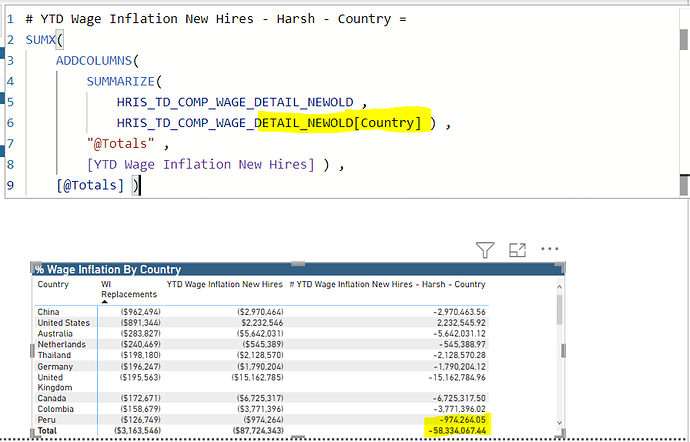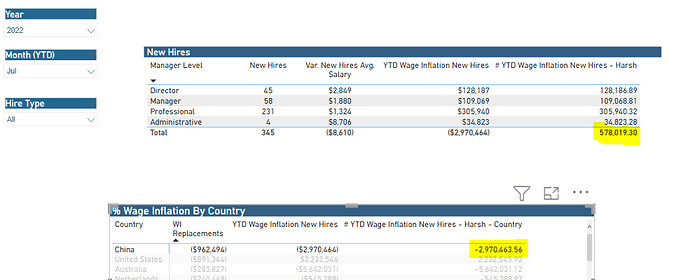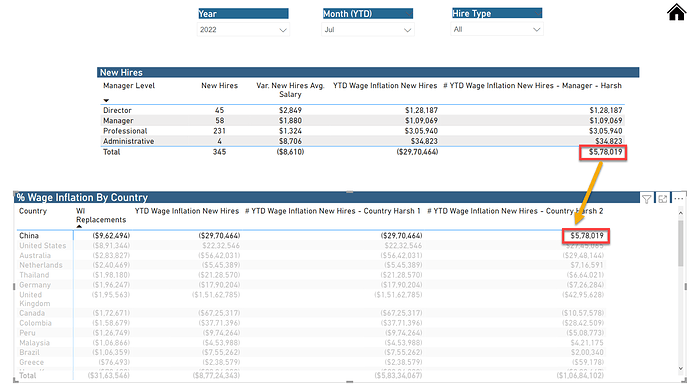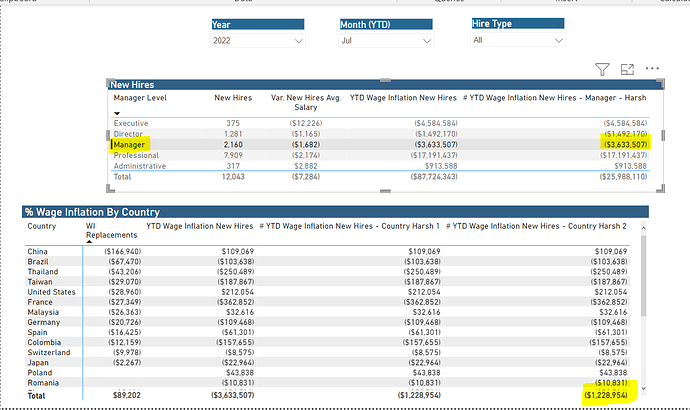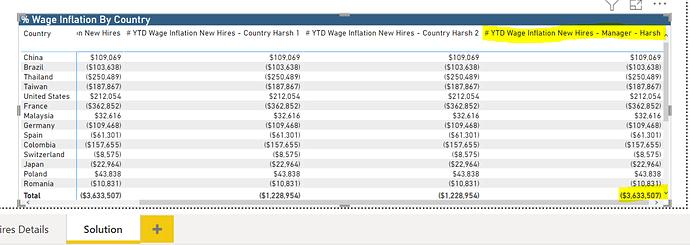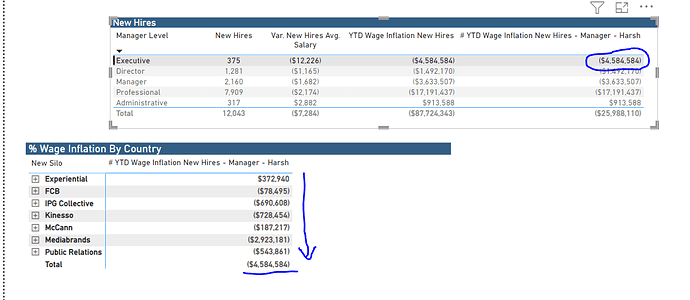Hello @rit372002,
Your understanding is incorrect here in all the 3 scenario’s.
First Scenario:-
In this scenario, you’re clicking onto the “Manager” and filtering the results of second table. And then you’re expecting a result of $3,633,507 to be shown in the second table. Can I know why?
The Correct Grand Total in that case at a Country Level is $1,228,954. So when you’re expecting a total to be shown as $3,633,507 then in that case, you’re expecting wrong results. If you want to see that same result then measure “YTD Wage Inflation New Hires” is already showcasing that in the first picture, there’s no need to create new measures again.
Second Scenario:-
The reason why second test is giving you the same results in both the tables is because you’re using the one same measure in both of the tables which was created only for the first table.
The measure for the first table contains the context at a “Manager Level” whereas the measure for the second table contains the context at a “Country Level”. Since you wanted to see the correct totals for both the tables, measures were created accordingly based on that context.
Now, you’re suggesting that when you filter one table, the other table should show the same numbers as of the first table then in that case your expectations are incorrect.
Third Scenario:-
In the third scenario, you’re adding “New Silo” into the context but using the same measure which was created for “Manager Level” context and expecting the totals to be different. How is that possible? If you’re changing the context inside the table visual then your context inside the measure also needs to be ammended accordingly. If you want correct totals for Silo then incorporate the Silo as a context inside your measure.
Lastly, the answer to your question - “Is there any way to create 1 measure which works for all?”
Have you ever seen Sam Mckay or any other Power BI expert creating one measure which suits in all the scenario’s. If that would have been possible than Power BI would have been much simpler tool and everybody would have been using it.
In case, you want to understand how the different types of context works, please go through the videos or courses which are already avaialble onto our education portal.
Thanks and Warm Regards,
Harsh


